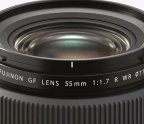Highly Concentrated FUJIFILM X-T3

THERE’S A SIGNIFICANT collection of Fujifilm cameras, both film and digital, which, over the decades, have flouted design conventions… most recently the X100 series retro-style compacts and the X-Pro1/ Pro2 mirrorless bodies with their unique hybrid optical/electronic viewfinders. But Fujifilm can do ‘mainstream’, and do it just as well too… as evidenced by the X-T1 and X-T2 which have been very successful at promoting the mirrorless camera concept to working photographers. And the ‘APS-C’ size sensor too.
The X-T2, in particular, delivered a compelling argument for the format; balancing portability, features, speed and performance like no other mirrorless camera when it was launched in July 2016. This camera helped Fujifilm to more market share in higher-end digital cameras than it had ever had before and, while it is now facing even more competition, it remains convinced that its two-system approach – ‘APS-C’ format X mount and digital medium format GF mount – is the right one for effectively meeting the demands of working photographers.
This is certainly reinforced by the announcement of the GFX 50R and the arrival of the X-T3, both further building on the benefits of both their sensor sizes and the mirrorless configuration.
The X-T3 is little changed from the X-T2 on the outside, but on the inside there’s a new sensor and processor, new EVF, new autofocusing system with more points and increased sensitivity, more speed and a bigger buffer, significantly upgraded video capabilities (significantly!), and a long list of new features, including some biggies such as touchscreen controls and a handy ‘Pre-Shoot’ function. In fact, all the turbocharged stuff that relied on the optional Vertical Power Booster Grip for the X-T2 is now on-board the X-T3 straight out of the box. There’s still an optional vertical grip, of course, and it gives a trio of battery packs to drive the X-T3 long and hard, but it’s no longer needed for extra speed or features such as a stereo audio output (see the 'Making Movies' panel for the full story about this camera’s impressive video features). There’s a big improvement in battery life (due to improved in-camera efficiencies) plus the bodyshell is beefed up in a few key areas – including the lens mount and the tripod mount – primarily to maintain durability with the bigger and heavier telephoto lenses Fujifilm is now releasing in the X mount (such as the yummy XF 200mm f2.0).
Four With More
It all kicks off with a completely new sensor christened ‘X-Trans CMOS 4’ which is
You’re reading a preview, subscribe to read more.
Start your free 30 days

